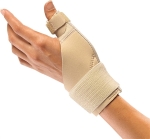
After surgery, rehabilitation speeds the healing process, and it helps you learn the best way to care for yourself and return to daily activities.
Some of the patients are quite hesitant and might delay the Physical Therapy. Delay can be a challenge for patient and a big problem later down the line. Loss of Strength, muscle stiffness, Regaining proper movements of surgical part are the complications must face by patient after the delay after surgery, A physical Therapist helps to improve health with quality of care, in order to the things they want to do again. By choosing Physical Therapy at right time you can avoid surgery. In the Physical Therapy variety of techniques used to attempt for the injured part or surgical part. Before you go to the surgery must get PT visit first, after surgery you will have get to the Rehab area, why not to try it first. Physical therapist believes in the statement- any discomfort on the body can be cure and should be treated. No matter what king of surgery you are undertaking but the physical therapy after surgery will help you to know the best way to care for yourself and restart your daily routine. Following are the Reasons:-
1. Boost up Mobility, Strength and Balance-
Loss of Mobility can have a devastating effect on your quality of life. Surgery can restrict your range of motion. Physical Therapy helps to improve mobility through movement, strength techniques; they help to improve muscle tone. Depending upon the severity of surgery, PTs would improve your balance. Physical Therapy is a vital part of healing for any type of surgery. Without ability to move freely and without pain a person may experience depression, weight gain and other health consequences. Even people lose the self- confidence. The goal of physical therapist is to get back to independent life and confidence. Ultimately Physical therapist will do whatever is necessary for your health. Physical Therapy can provide a safe and gradual plan to get you confidently back on your feet. And if the surgery took place in the arm, wrist, or hand, therapists can help you sharpen your fine motor skills again.
2. Reduce Pain & Swelling-

Physical Therapy never hurt, that’s why it is best choice when you have long term pain after surgery. Physical therapists are experts not only in treating pain, but also a source. Swelling after surgery is another basic step of healing. Electric nerve stimulation is short term relieve given through skin helps to improve strength and relieves muscles spasms. Heat Therapy is given for pain and inflammation and increase range of motion. Ice packs are recommended for 3-4 times a day and for swelling your physical therapist may provide massages and rehabilitation can help to decrease swelling and restrict the surgical pain from becoming chronic.
3. Reduce Scare Tissue Formation

After surgery scar formation is a natural occurrence as scars helps to strength the tissues. Your immune system respond against the injury and scars arise over your skin due to collection of new cells that cover the site of injury. Some scars can be large and painful or tender. Excess scar of tissue can reduce function and movement for months after procedure. Many massage techniques, Pressure therapy, and Ultrasound therapy to reduce the thickness of scar, simply bending and extending the joints close to scar will also reduce tissue formation. By treating your pain with, you can reduce your dependency on taking medications for stiffness and pain of tough scar tissue.
4. Reduce development of Secondary Issues:
Loss of Mobility can have a devastating effect on your quality of life. Surgery can restrict your range of motion. Physical Therapy helps to improve mobility through movement, strength techniques; they help to improve muscle tone. Depending upon the severity of surgery, PTs would improve your balance. Physical Therapy is a vital part of healing for any type of surgery. Without ability to move freely and without pain a person may experience depression, weight gain and other health consequences. Even people lose the self- confidence. The goal of physical therapist is to get back to independent life and confidence. Ultimately Physical therapist will do whatever is necessary for your health. Physical Therapy can provide a safe and gradual plan to get you confidently back on your feet. And if the surgery took place in the arm, wrist, or hand, therapists can help you sharpen your fine motor skills again.
5. Improves Flexibility-

A fractured bone or rehabilitation after surgery requires weeks o rest were the muscles are not used at all. To prevent from injury increasing your flexibility is crucial step. Loss of flexibility leads to weekend muscles that easily become stiff, that effect jumping, running, walking bending and stretching movements. Restoring normal range of motion after surgery stretching techniques helps to maintain flexibility by reducing resistance in muscle tissue. Contracting and stretching of muscle by planned exercise during rehabilitation improve performance and enable to do everyday activity. Such training allows you to easier and deeper movements by increasing flexibility that must provide wide range of physical benefits.






